Ever find yourself in a selling situation where you thought things were going well…but then suddenly the prospect disappeared, or the sale just didn’t go the way you expected?
Most of the time, sales situations that unexpectedly go wrong are the result of missing a fundamental step in your sales approach.
Salespeople often want my advice on how to deal with specific sales problems that arise, asking “How do I overcome this exact objection?” or “How do I deal with a prospect who says or does this?”
But in reality, drilling down into those outlier scenarios isn’t nearly as important as understanding the basics of sales.
The strength of your foundation of selling is what makes or breaks a selling interaction. It’s what separates top performers from everyone else.
So, it’s not necessarily how you’re handling those outlier scenarios that determines your success in sales, but rather how well you’ve mastered the basics of sales to begin with.
In this video, I’m going to show you the 9 basics of sales that everyone must know. Check it out:

Basics of Sales Tip #1: Trial and error isn’t a strategy.
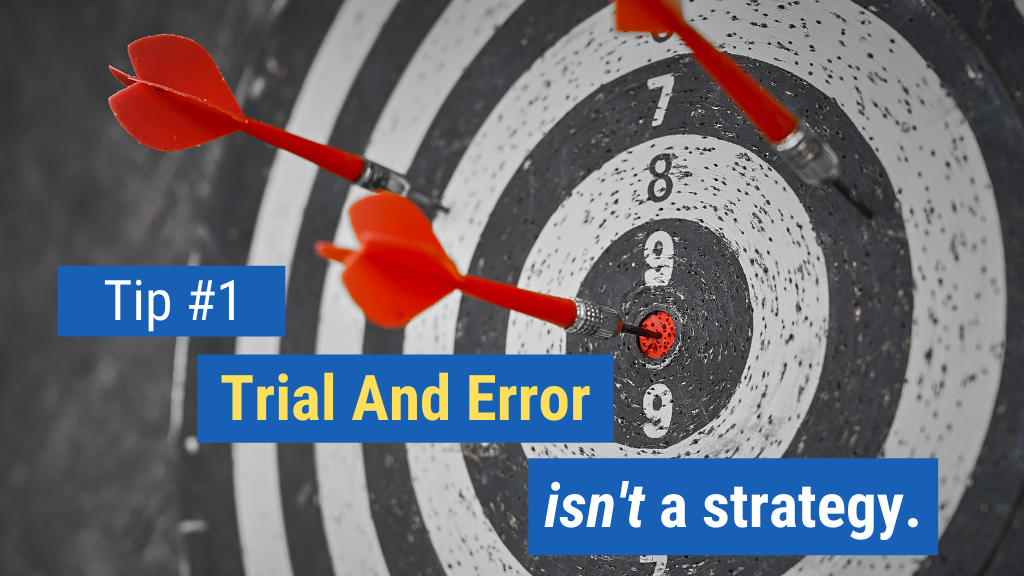 I’ll repeat that: Trial and error is not a sales strategy.
I’ll repeat that: Trial and error is not a sales strategy.
If you compare sales as an industry to virtually any other profession—such as law, accounting, dentistry, medicine, etc.—it becomes apparent that sales is one of the only professional industries where there isn’t a governing body that regulates who gets to do that job, and what training they need to be able to do it.
When it comes to being a salesperson, we just decide we’re going to sell something, and suddenly we’re officially in sales. Because of this unique quirk of our industry, many of us miss out on foundational training that other professionals enjoy.
Most of the time, salespeople learn how to sell simply by using trial and error. When we get our first sales jobs, we’re thrown into the fire, given a phone and a list of prospects, and told to start dialing or knocking on doors. Some of us might have been given some kind of framework to follow, but in most cases, we just use trial and error to learn what to do.
The problem is, of course, that trial and error isn’t a real sales strategy. It simply doesn’t work.
One of the most crucial basics of sales is that using trial and error as a sales strategy will never make you a top performer. It will never get you where you want to go. And that brings us to the next basic fundamental of sales…
Sales Basics Tip #2: Have a process
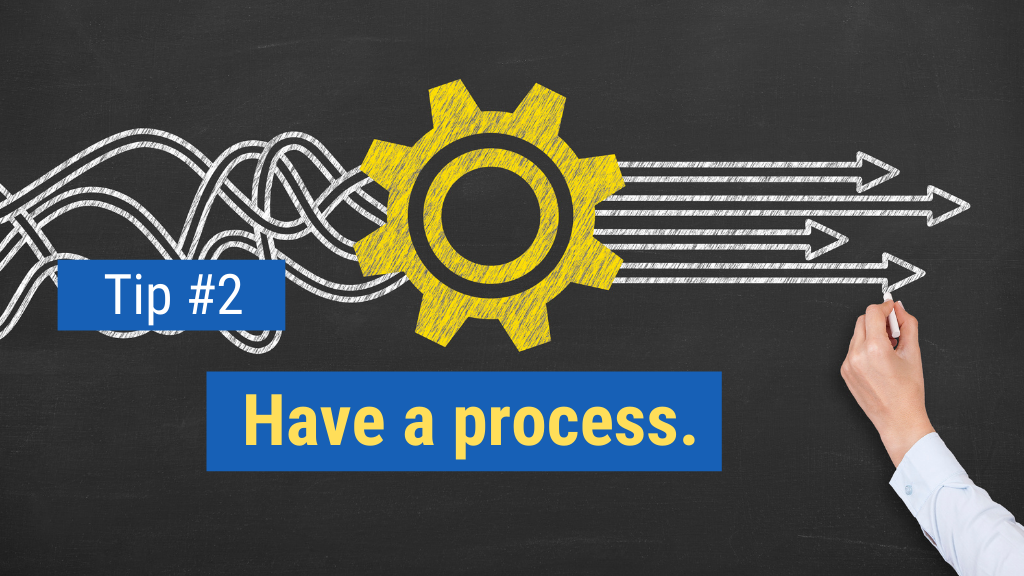 I’ve already set up the importance of not using trial and error as a strategy. But why is having a real strategy for sales so important in the first place?
I’ve already set up the importance of not using trial and error as a strategy. But why is having a real strategy for sales so important in the first place?
Well, having and using a sales process as a salesperson is just as important as a CPA understanding how to balance a balance sheet. We need to have a sales process that we can follow—a sales process that we know actually works.
When we use the sales process the same way every single time we sell, it makes it possible for us to diagnose exactly what went wrong when things don’t go as expected. Without a consistent sales process, it’s impossible to get useful feedback on what’s working and what’s not.
As a result, the vast majority of salespeople never really improve because they’re using trial and error instead of a process. Tons of salespeople either get weeded out in sales early on or they never make it to the top simply because they fail to follow a process. They don’t fail because prospects don’t like them, or because they just weren’t good enough to be an effective salesperson. They fail because they just never put a process in place.
Having a process is one of the fundamental basics of sales you simply can’t afford to ignore. Put in place a process that you can follow, step-by-step, to take you through each phase of the sale every single time you sell.
Tip #3: Bring insight to the table.
 Now, demonstrating insight is the first part of any successful sales process. (At my firm, we teach this as the first component of our Sales Insights Methodology.) You must bring insight to the table up front, at the start of the sales interaction.
Now, demonstrating insight is the first part of any successful sales process. (At my firm, we teach this as the first component of our Sales Insights Methodology.) You must bring insight to the table up front, at the start of the sales interaction.
So many salespeople are showing up at prospects’ doors with one of two outdated approaches. They’re either opening up their jacket pocket and saying, “Hey, let me show you all the amazing stuff we have!” or they’re trying to engage prospects in conversations using ineffective openers like, “I’d love to learn more about your business,” or “I’d love to learn more about how you’re using XYZ in your line of work.” And all the while the prospect is thinking, “Why would I want to teach you, show you, or get you up to speed on how I’m using something with the hope that maybe you’re then going to sell me something?” That’s not an effective approach.
Instead, you need to engage your prospects with insight, demonstrating that you know what the heck you’re talking about. And you can do that by giving them valuable industry information that provokes them or tells them something they hadn’t thought of before.
Make sure you bring something to the table that really gets them to say, “Hmm, I want to have a conversation with this person.”
Basics of Sales Tip #4: Disqualify prospects.
 This may feel counterintuitive if you haven’t followed a lot of my content before. Disqualifying prospects is the opposite of what most salespeople are taught to do. Maybe you’ve been taught to qualify prospects, or that you need to convince or persuade them.
This may feel counterintuitive if you haven’t followed a lot of my content before. Disqualifying prospects is the opposite of what most salespeople are taught to do. Maybe you’ve been taught to qualify prospects, or that you need to convince or persuade them.
But the reality is that your prospects don’t need you to convince or persuade them. And they don’t really even want you to qualify them.
Instead, what you should be doing is determining whether each prospect is a fit—that’s it. If they’re not a fit, that’s cool. Focus on disqualifying people who aren’t a fit so you can move on and spend your time and energy on those who are.
Having a disqualification mindset will allow you to stop wasting time and energy on people who were never going to buy from you in the first place. That’s why disqualifying prospects is one of the most important basics of sales that every salesperson should master.
Let’s say you meet with 50 prospects over the course of the next couple weeks. And imagine that 50% of those prospects were never going to buy from you in the first place—and that’s okay. You must have a process in place that allows you to move on from that 50%, including a systematic set of questions you can ask to determine whether or not they’re worth your time and energy. The 50% who are left over are the people you want to spend your time with.
Sales Basics Tip #5: Solve, don’t present.
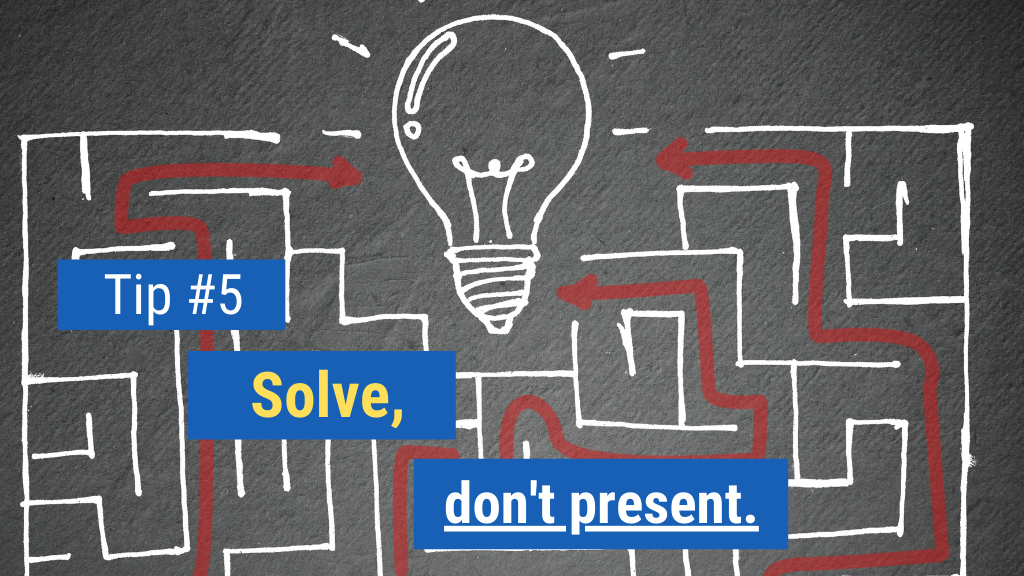 Once you know that you’re in front of a qualified prospect, it’s time to present your solution to their challenges. But when I use the term “present,” it’s important to make the distinction that I’m not talking about pitching, or giving an enthusiastic, excited presentation where you show off the features and benefits of your offering.
Once you know that you’re in front of a qualified prospect, it’s time to present your solution to their challenges. But when I use the term “present,” it’s important to make the distinction that I’m not talking about pitching, or giving an enthusiastic, excited presentation where you show off the features and benefits of your offering.
Rather, I want you to think about solving instead of presenting.
The presentation phase of your sales process should demonstrate that you can solve your prospects’ challenges. When you take them through that disqualification process, you’re going ask them a lot of questions about what’s going on in their world, so you can really understand their key challenges. Then, in the presentation phase, you should exclusively present to those challenges that the prospect mentioned. Leave out your features and benefits—your prospects don’t care. All they care about is whether you can actually solve their problems.
Sales Basics Tip #6: Be N.S.O.
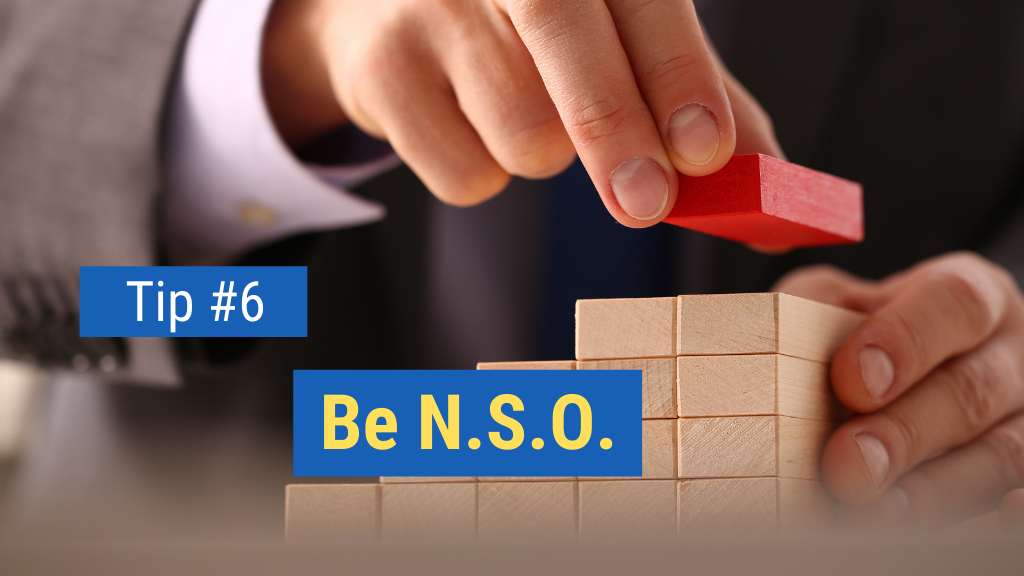 N.S.O stands for Next Step Obsessed. Next steps are one of the most fundamental basics of sales. You want to be completely obsessed with next steps in your sales process.
N.S.O stands for Next Step Obsessed. Next steps are one of the most fundamental basics of sales. You want to be completely obsessed with next steps in your sales process.
One of the biggest reasons that sales fall apart is simply that the salesperson isn’t scheduling a clear next step.
Now, you may have a prospect that genuinely wants to buy what you have—but things happen in life and people get busy, or maybe they were on the fence and not 100% sure—and they say something like, “You know what? Why don’t you follow up with me sometime next week?” Most salespeople respond to this by saying something such as, “Sure! I’ll follow up with you next week. How about Wednesday?” And then the prospect says something noncommittal like, “Yeah, try me next Wednesday.” When you go to call that prospect on Wednesday, though, what happens? They don’t answer. They’re not available. They’re not there. And you’re left in the dark.
This is the exact situation you can avoid ever having again is you’re N.S.O. Always schedule that next step in the current sales situation that you’re in, and get an actual date and time in the calendar before hanging up the phone, ending the video call, or walking away from the meeting.
So, if you’re in a selling situation where you’re face-to-face with a prospect or you’re on a Zoom, and you’re at the end of the meeting, and it seems like it’s gone well, always schedule your next meeting before you end the current conversation. Never let a prospect out of your sight without them saying one of two things: 1) “No, this isn’t a fit” or 2) “Let’s schedule a next step.”
And of course, the next step can be a sale. That’s fine, too. But always have a next step in place, and be obsessive about scheduling next steps.
Tip #7: Use a prospecting blueprint.
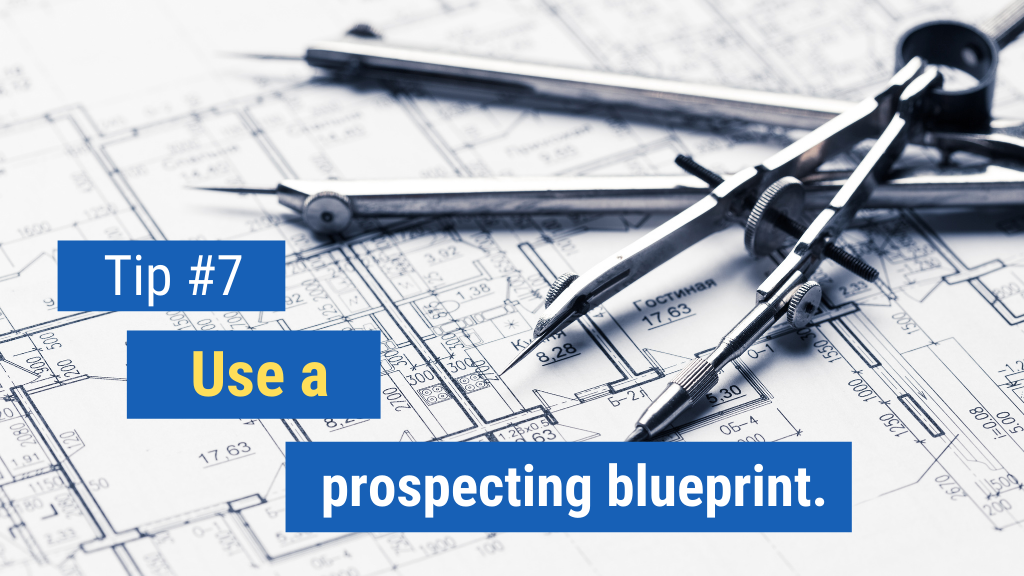 This is absolutely key when it comes to understanding the basics of sales. When I was first learning to prospect and generate my own leads, I was just banging on the phones, old-school style, making cold calls. The reality is that it was really, really hard. And in most cases, it was pretty ineffective.
This is absolutely key when it comes to understanding the basics of sales. When I was first learning to prospect and generate my own leads, I was just banging on the phones, old-school style, making cold calls. The reality is that it was really, really hard. And in most cases, it was pretty ineffective.
Most of my best sales came as a result of inbound leads, a solid introduction, sometimes a cold email—or maybe a combination of those. But the pure cold call is hard work and it’s pretty low-yield. I did get a few good sales as a result of cold calling, of course, but there’s no need for you to go through that whole process today. Instead, use a prospecting blueprint that mixes all of your tools together. That way, you’re taking a prospect through an entire prospecting process, by sending them an email, then following up on the email with a call, then leaving a voicemail, then sending another email, then maybe sending them a package, then sending them a LinkedIn connection request, then making another call, and then sending it them another package…I’m making this up, but you get the point.
The point is that your prospecting blueprint should be a prospecting campaign with a whole bunch of “touches” to the prospect over the course of a few weeks, so that even if they don’t respond to you, you get on their radar and demonstrate that you have valuable insight to share.
By the time you ultimately get them on the phone or you send them that fifth email, they remember who you are. They’ll think, “Oh yeah, that person left me a message on Monday. They tried me a couple of times last week. They just sent me a LinkedIn request. I’ll respond now.”
Remember that it can take more than 20 touches like this before the average prospect is going to respond. That’s why we need that blueprint in place to keep us on track.
Sales Tip #8: Think like a top performer.
 I’ve been fortunate enough to be a top sales performer myself, while also working with thousands of top-performing salespeople over the past 20 years. As a result, I’ve been able to see exactly what top performers do and how they think.
I’ve been fortunate enough to be a top sales performer myself, while also working with thousands of top-performing salespeople over the past 20 years. As a result, I’ve been able to see exactly what top performers do and how they think.
What’s amazing is that the biggest difference between top performers and average performers isn’t usually very tactical at all—it has much more to do with mindset than anything else.
Simply put, top performers have such great success in large part because of how they think. I challenge you to start thinking like a top performer. Top performers think confidently, calling as high up as possible at their prospect organization. They motivate themselves on a daily basis, getting up early and immediately doing their set sales activities. And they view sales as a game, so they aren’t afraid of getting no’s and they don’t take rejection personally.
These are just a few of the most important mindsets that top performers routinely demonstrate. Start thinking like a top performer. You’ll ultimately become the way you think.
Basics of Sales Tip #9: Have a sales mentor.
 Maybe you already have a sales mentor. If so, that’s awesome. But if you don’t, you absolutely must get a sales mentor. If you’re just trying to figure out this whole sales thing on your own, it’s going to be a very long and arduous road ahead. And there’s a good chance you’ll never make it to the end of the journey. Having a sales mentor who can guide you is so important.
Maybe you already have a sales mentor. If so, that’s awesome. But if you don’t, you absolutely must get a sales mentor. If you’re just trying to figure out this whole sales thing on your own, it’s going to be a very long and arduous road ahead. And there’s a good chance you’ll never make it to the end of the journey. Having a sales mentor who can guide you is so important.
Make sure you commit to choosing someone who is already where you want to be, someone who has already achieved what you want to do.

At the end of this article, I’ll actually give you an opportunity to register for a more in-depth training where you can learn more about how I might be able to mentor you myself. But either way, I want you to commit to having a sales mentor to coach you, push you, and hold you accountable.
So, there you have it. Now you’ve learned the 9 basics of sales everyone must know. Which of these sales basics did you find most useful for your own selling strategy? Be sure to share your thoughts in the comments section to join the conversation.

Enjoyed this article? Please share away!

Get instant access to our free sales training:
Why Prospects Push Back on Price, Give 'Think-It-Overs,' and Ghost in Sales Until They Meet a Sales Superstar Who Is Following These 7 Simple Keys

About the Author Marc Wayshak
Marc is is the best-selling author of three books on sales and leadership, including the highly acclaimed titles Game Plan Selling, The High-Velocity Sales Organization and his forthcoming book, Sales Conversations, Mastered.
Marc is a contributor to Inc, HubSpot, Fast Company, Entrepreneur Magazine, and Huffington Post Business. He also hosts a popular YouTube channel on sales strategy with over 103,000 subscribers.
Marc helps thousands of people his data-driven, science-based approach to selling that utilizes all the best tools available to sales organizations today.

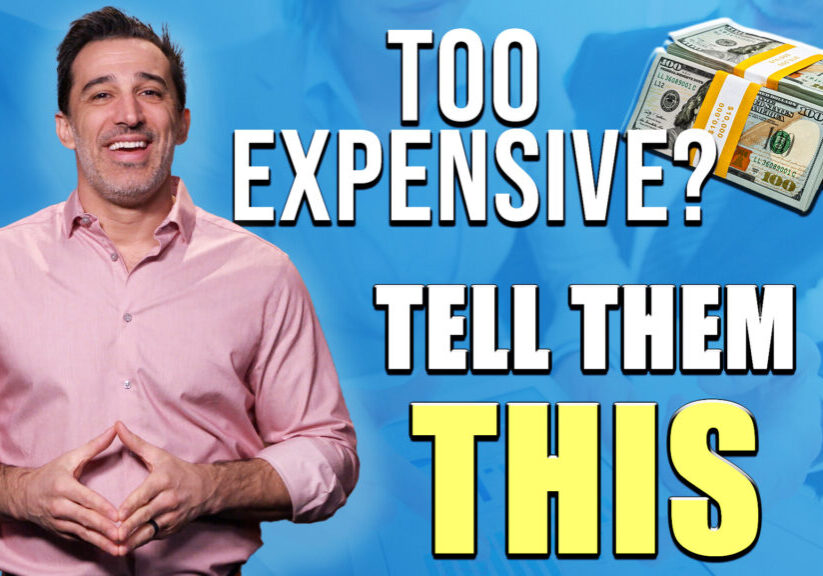
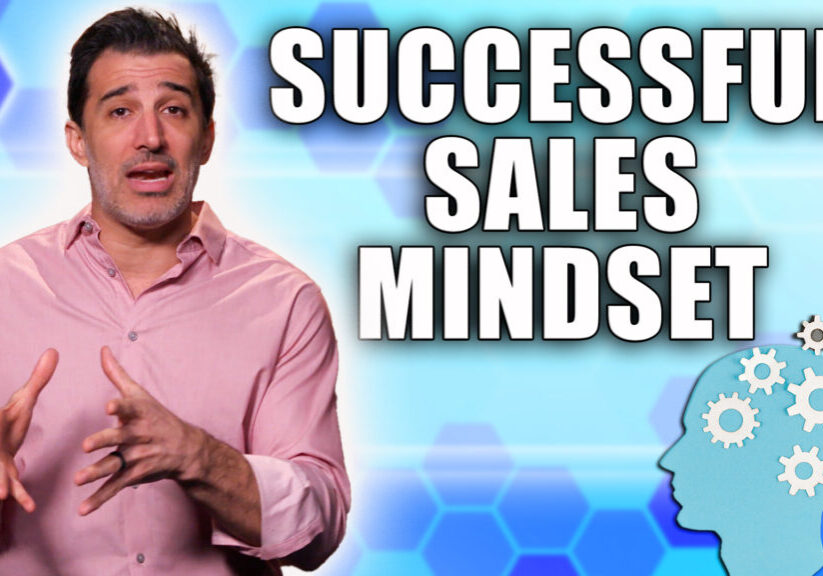
![How-to Sell to Power [C-Suite Sales Must-Knows!] How to Sell to Power [C-Suite Sales Must-Knows!]](https://salesinsightslab.com/wp-content/uploads/bb-plugin/cache/How-to-Sell-to-Power-C-Suite-Sales-Must-Knows-1024x576-landscape-7a52c541b28a7b772ad9e1010d8240be-.jpg)

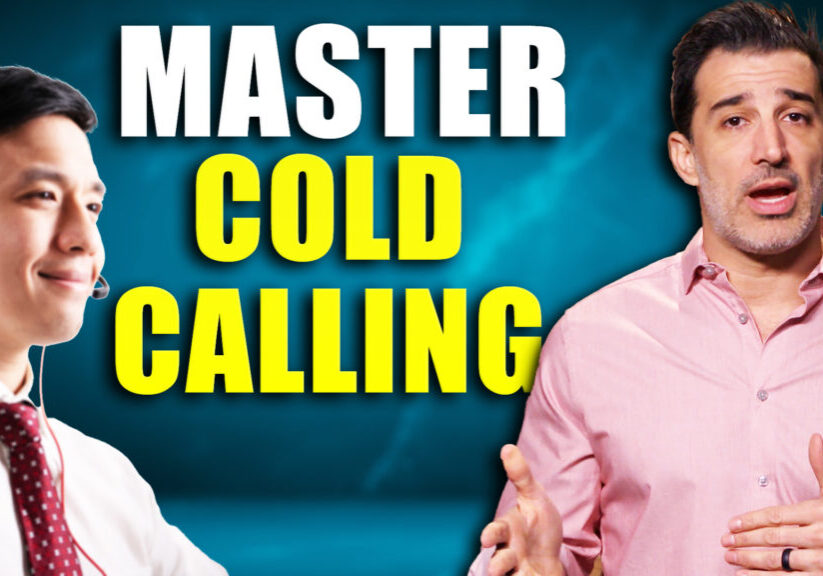
![The Absolute Best Way to Start a Sales Conversation [WITH ANY PROSPECT] The Absolute Best Way to Start a Sales Conversation [WITH ANY PROSPECT]](https://salesinsightslab.com/wp-content/uploads/bb-plugin/cache/The-Absolute-Best-Way-to-Start-a-Sales-Conversation-WITH-ANY-PROSPECT-1024x576-landscape-be9d9379ab94d9f71b5bfeed42246a84-.jpg)